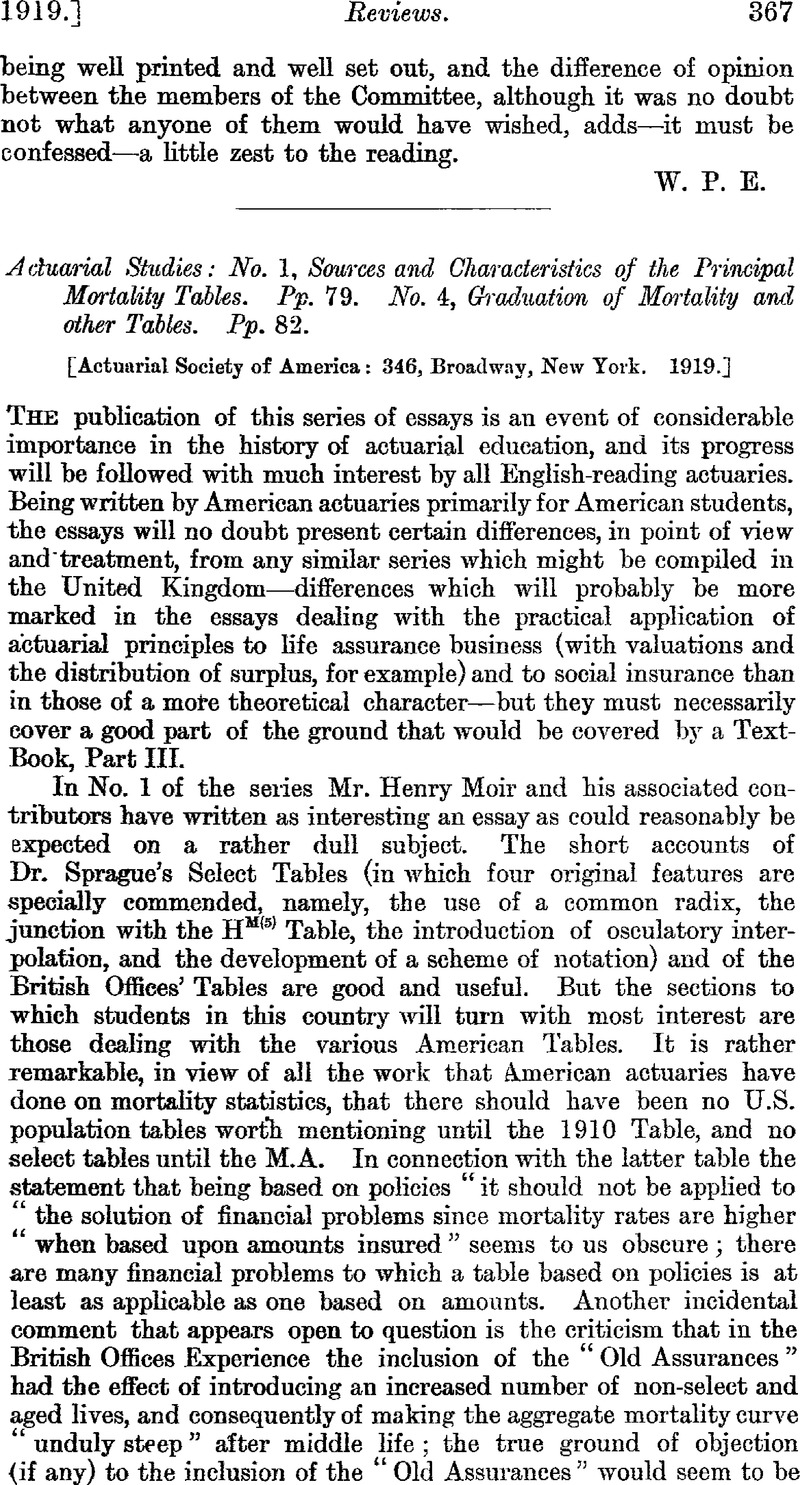No CrossRef data available.
Article contents
Actuarial Studies: No. 1, Sources and Characteristics of the Principal Mortality Tables. Pp. 79. No. 4, Graduation of Mortality and other Tables. Pp. 82. [ Actuarial Society of America: 346, Broadway, New York. 1919.]
Published online by Cambridge University Press: 18 August 2016
Abstract

- Type
- Reviews
- Information
- Copyright
- Copyright © Institute and Faculty of Actuaries 1919
References
page 368 note * Let u0 = pw0+qw±5+rw±10 , where wx = ux−2 + … + ux+2 .
(1) Assuming 5th differences of u to be constant we obtain Mr. King's interpolation formula iiia (J.I.A., vol. xliii, p. 114).
(2) Assuming 3rd differences to be constant we can determine p, q, r, so as to satisfy one additional condition.
(a) Making the sum of the squares of the coefficients a minimum, we obtain the “best” value of u, namely,
(696w 0+488w ±5−136w ±10)/7000.
R2 (the reduction of mean square error) = ·1018.
The minimum value of R2 for a range of 25 terms is ·090 (J.I.A., vol. xlviii, p. 407).
(b) Putting p=q, we obtain the formula used by Mr. Henderson (51w 0+51w ±5−14w ±10/625
R2=·1050.
(c) Putting r = 0, we obtain Mr. King's interpolation formula Va
R2 = ·2340.




